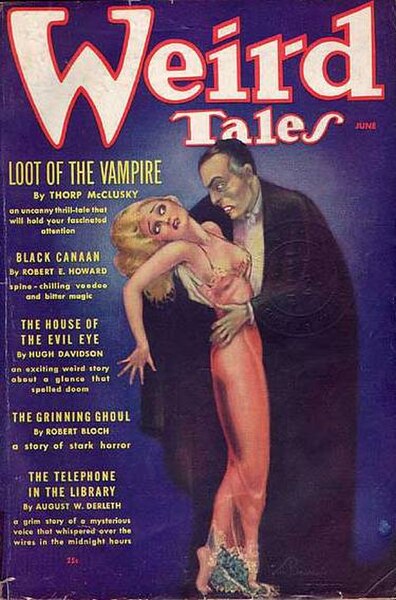Interview with the Vampire
Interview with the Vampire is a gothic horror and vampire novel by American author Anne Rice, published in 1976. It was her debut novel. Based on a short story Rice wrote around 1968, the novel centers on vampire Louis de Pointe du Lac, who tells the story of his life to a reporter. Rice composed the novel shortly after the death of her young daughter Michelle, who served as an inspiration for the child-vampire character Claudia. Though initially the subject of mixed critical reception, the book was followed by many widely popular sequels, collectively known as The Vampire Chronicles. A film adaptation was released in 1994, starring Tom Cruise and Brad Pitt, and a television series premiered in 2022. The novel has also been adapted as a comic three times.
First edition cover
Vampire literature covers the spectrum of literary work concerned principally with the subject of vampires. The literary vampire first appeared in 18th-century poetry, before becoming one of the stock figures of gothic fiction with the publication of Polidori's The Vampyre (1819), which was inspired by the life and legend of Lord Byron. Later influential works include the penny dreadful Varney the Vampire (1847); Sheridan Le Fanu's tale of a lesbian vampire, Carmilla (1872), and the most well known: Bram Stoker's Dracula (1897). Some authors created a more "sympathetic vampire", with Varney being the first, and more recent examples such as Moto Hagio's series The Poe Clan (1972–1976) and Anne Rice's novel Interview with the Vampire (1976) proving influential.
Artwork based on Sheridan le Fanu's Carmilla, an early and influential work of vampire literature.
Vampires appeared commonly in 20th-century literature, such as in this 1936 issue of Weird Tales.



